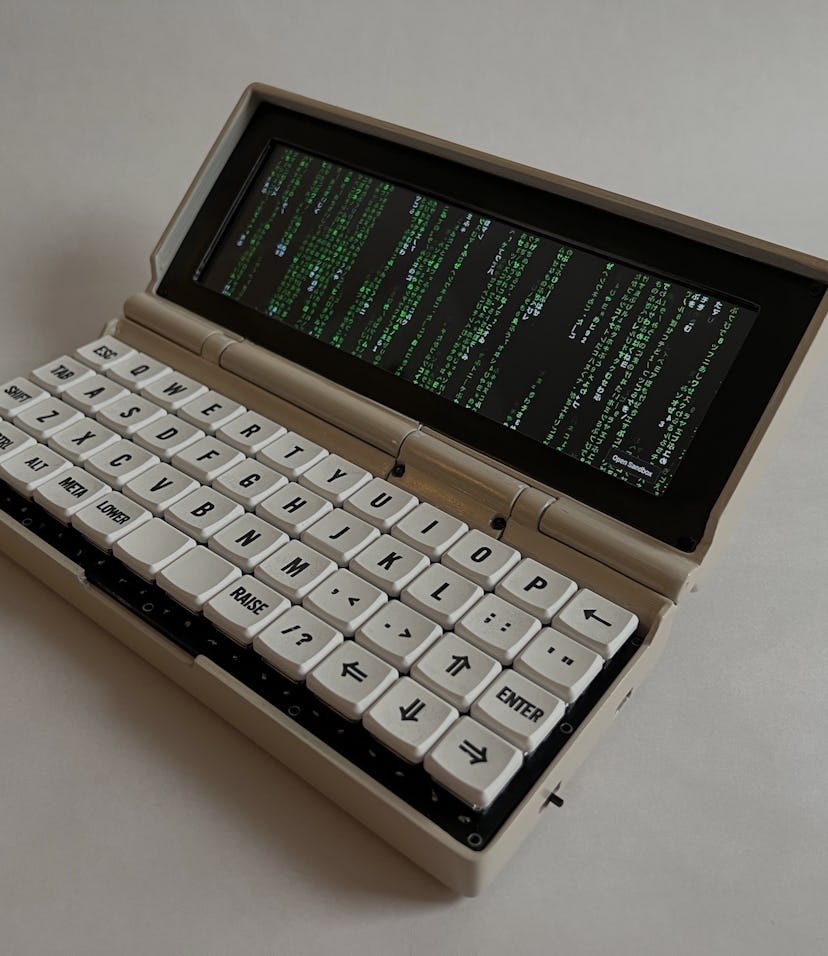Design
This mouth-watering mini PC comes with a built-in mechanical keyboard
GitHub user Penk Chen published all the files and a step-by-step guide for his open-source portable PC build.

Cyberdecks are all the rage right now and there’s no shortage of cool concepts from the growing DIY community. The latest contribution comes from Penk Chen, who calls himself a “digital nomad” on his GitHub profile. His retro-styled handheld PC, called the Penkesu, is a simple design that features repurposed Game Boy Advance SP hinges and a low-profile mechanical keyboard to maintain its portable nature.
The Penkesu, which I originally thought was a pun on Chen’s name, is actually a play on words for its pen case form factor, according to the creator’s comments on Reddit. Chen said on the Penkesu website that he was looking for a “rebound” project after the success of his CutiePi product, a 12mm Raspberry Pi-powered tablet that has a handle that doubles as a stand. Chen explained that he wanted a project where he didn’t have to worry about commercial viability, but that would also serve as a reminder as to why he started tinkering.
The barebones approach of the Penkesu doesn’t lend itself to many applications, but it could be a great gateway project into the world of cyberdecks. It can also be a novel way to get some simple word processing or light coding done on the go. You can, of course, pretend like you’re a Hollywood hacker booting up your portable terminal.
Easy as Pi — Chen powers the mini PC with a Raspberry Pi Zero 2 W and a Li-Po battery, which sees a roughly five-hour standby time with the battery on a Pi4 and set at 50 percent screen brightness, according to Chen.
The Penkesu’s screen measures 7.9 inches wide with a 400 x 1280 display that’s connected by a HDMI ribbon cable. Perhaps the most satisfying part is that the handheld computer was built with a 48-key ortholinear mechanical keyboard that uses Kailh Low Profile Choc V1 switches and MBK Choc Low Profile keycaps so you get that satisfying tactile feel wherever you’re typing.
The Penkensu’s retro styling on the outside is matched by the basic interior components. The Penkesu only houses three electrical components and most of the other parts are 3D printable or off-the-shelf products. Penk did note in a comment that there’s some space to add USB ports to the Penkesu.
Build it yourself — Chen said he has no immediate plans to sell kits or mass-produce the Penkesu, so he put up all the designs and plans on his GitHub page. His website even has step-by-step instructions on how to build the mini PC, which should be pretty straightforward for anyone with a little DIY experience. For Chen, the total cost of materials ran around $150.